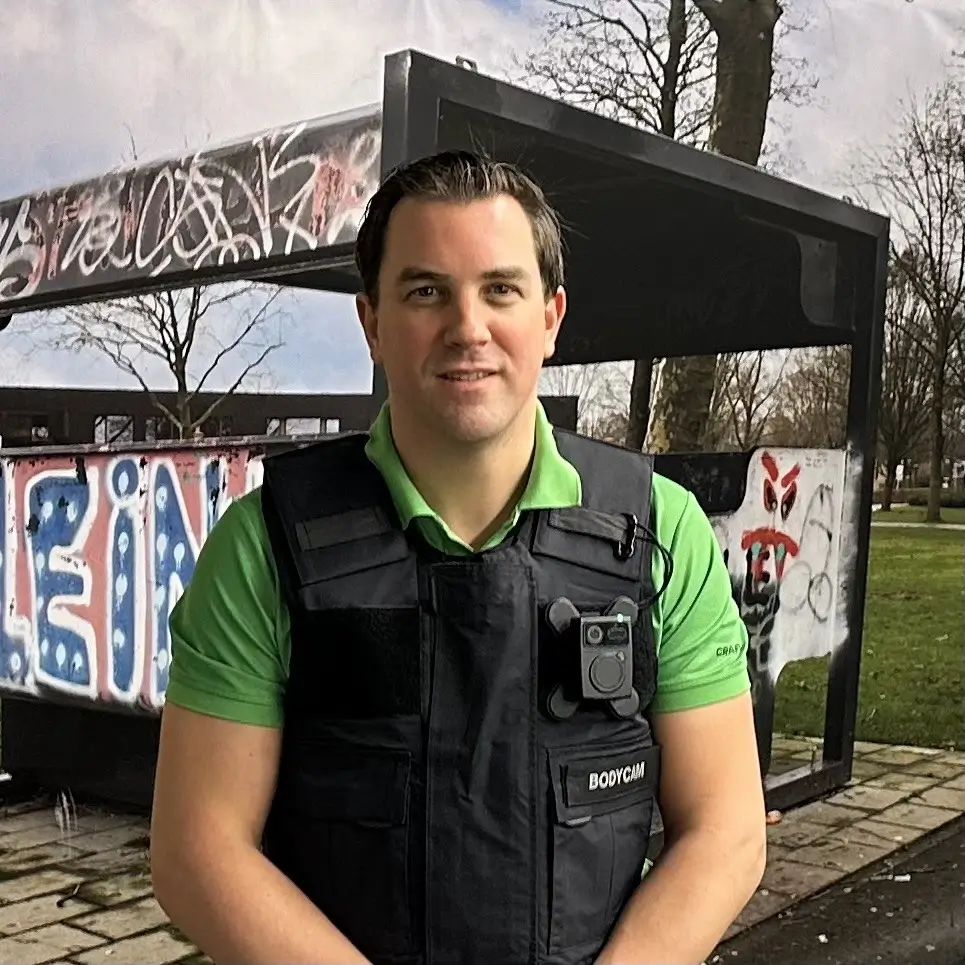Bodycam Insights from a Special Enforcement Officer Trainer
Anton Bos shares his seasoned perspectives on bodycam use in law enforcement, drawing on his extensive experience as a BOA trainer in the Netherlands. His insights offer a practical understanding of how these tools are shaping the profession.

Meet Anton Bos, the director of Boatrainer.nl, who brings a wealth of field experience to his role as a trainer for BOAs (Dutch Special Enforcement Officers) and safety professionals across the Netherlands. With a foundational background in Integrated Safety Science and a pioneering stint as the nation’s first youth BOA, Bos has advanced through the ranks to lead teams in Supervision and Enforcement. Today, he leverages his extensive expertise at BOAtrainer.nl BV and as a Youth BOA coach at Jeugdboa.nl, focusing on issues such as youth group management and professional development for BOAs. His practical approach ensures that the training he provides is rooted in the realities of law enforcement work.
Q: How do bodycams affect the daily work of BOAs?
Anton Bos: “Bodycams are a game-changer. They help BOAs de-escalate threatening situations, document escalations or incidents, and encourage reflection on their actions. They’re not just about recording; they bring awareness to professional behaviour and communication.”
Q: How do citizens generally react to seeing a bodycam?
Anton Bos: “Most people see it as normal now. Bodycams are becoming a standard part of the kit for various law enforcement personnel, from police to security officers. It’s a sign of professionalism and transparency.”
Q: How do bodycams contribute to the safety of both BOAs and citizens?
Anton Bos: “Bodycams have a multifaceted role in enhancing safety. They not only offer a means to de-escalate situations but also serve as vital evidence in legal and complaint proceedings. Their presence ensures that BOAs are protected while performing their duties, thereby contributing to overall public safety.”
Q: Can you give an example of a situation where a bodycam was crucial for a BOA?
Anton Bos: “Certainly. There was a recent case where a BOA confronted a group of youths. One youth assaulted the BOA and then fled. Thanks to the bodycam footage, the assailant was identified and apprehended. It’s a clear example of how bodycams can ensure safety and accountability.”
Q: How has the introduction of bodycams changed the public’s perception of BOAs?
Anton Bos: “I’m not entirely sure about the full extent of the change in public perception. However, it’s clear that bodycams are increasingly seen as a normal part of law enforcement’s toolkit, signifying professionalism and accountability.”
Q: How does bodycam training improve BOAs’ professionalism and effectiveness?
Anton Bos: “Training raises awareness of their conduct and enables them to review and reflect on their interactions. It’s about understanding the impact of their actions and improving their approach.”
Q: What are the most common misconceptions about bodycams you encounter in your training?
Anton Bos: “A prevalent misconception is that bodycams are meant for internal surveillance of BOAs. In reality, most policies stipulate that bodycam footage cannot be used in personnel files. Both BOAs and back-office managers must handle recordings with integrity and transparency.”
Q: How does bodycam footage assist in evaluating and improving BOA performance?
Anton Bos: “We use bodycam footage extensively in our training. It allows us to evaluate situations clearly and discuss them with BOAs. This can be done on an individual basis, with a team, or even on a national level across various BOA groups, enhancing the overall quality of law enforcement.”
Q: Can you discuss the legal and privacy aspects BOAs should be aware of when using bodycams?
Anton Bos: “Before deploying bodycams, a Data Protection Impact Assessment (DPIA) and a clear protocol are established, outlining legal and privacy considerations. Addressing these concerns and providing clear explanations usually allays fears about privacy and surveillance.”
Q: What are your tips for municipalities considering implementing bodycams?
Anton Bos: “Every BOA should complete the full basic training before using bodycams. We often see inadequate training or reliance on team-based explanations, leading to misuse or misunderstanding of bodycams. A basic certification should be a mandatory minimum.”
Q: What future developments in bodycam technology do you see as crucial for law enforcement?
Anton Bos: “I see great potential in integrating bodycams with other devices, like dashcams or emergency buttons on radios. In addition, dual-position cameras providing a 360-degree view could be revolutionary, especially in situations where the threat may come from multiple directions.”
Video: BOA training from the perspective of a ZEPCAM T2+ bodycam
Find out how ZEPCAM bodycams can make local law enforcement safer and more effective. Contact our law enforcement experts for further information.


